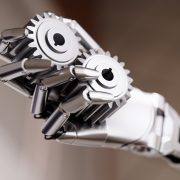Why we need ISA-95 to support a smart manufacturing environment
Smart Manufacturing – The integration of various systems at the heart of a modern factory. To be truly ’smart’ in manufacturing terms, an organisation needs to have in place approaches that enable collaboration across numerous key areas, from conditions and demands on the shop-floor through to external factors impacting on to the supply chain or to cover new customer requirements. The added pressure, of course, is that all these factors must be monitored and reacted to in real-time.
As processes may have developed over an extended period, this may mean for example that you have one element of the process using key data in a certain way, but that there is no efficient approach to passing that information into other related systems to control the overall flow around complete production.
To smooth out how smart manufacturing can be adapted, the use of a more standardised approach is extremely important. This is where the ISA-95 standard definition of smart manufacturing comes to the fore. ISA-95 is a long-established standard to allow production system designers and engineers to apply common standards to the interfaces between different systems that form the complete factory environment.
In recent years there has been a massive increase in the computerisation of control points across multiple systems, as well as the growing use of robots and the development of what is termed the ‘Internet of Things (IoT)’. The IoT sees intelligence added to all sorts of hardware in every aspect of our lives, from factories right down to the products they make. This changing world has led some people to believe that the ISA-95 standard is no longer fit for the role it was developed to cover.
However, the true value of this standard as developed over the past twenty years is in fact that it isn’t based on any one piece of technology or a particular implementation of one company’s approach to solving common issues. Rather, it is a genuinely open form of guidance that allows the implementer to model what they need across diverse areas, from production control, inventory management, QA, accounting and maintenance. As the ISA-95 standard is a developing and reactive approach, it remains fundamentally the best guide for creating efficient and responsive manufacturing and production solutions.
As technologies and approaches such as Big Data are implemented, manufacturing will adapt them for their own value and improvements. However, new developments need to be recognised as complementary to and building upon the foundations that are so well defined and understood within ISA-95.
However you choose to develop your factory’s smart manufacturing solutions, the key has got to be clarity and consistency as emphasised in ISA-95. This will ensure the best initial approach to provide production techniques that will allow your organisation to develop best practice smart manufacturing processes. These systems are vital for success if any company is to respond to the fast-paced demands of the modern world.







